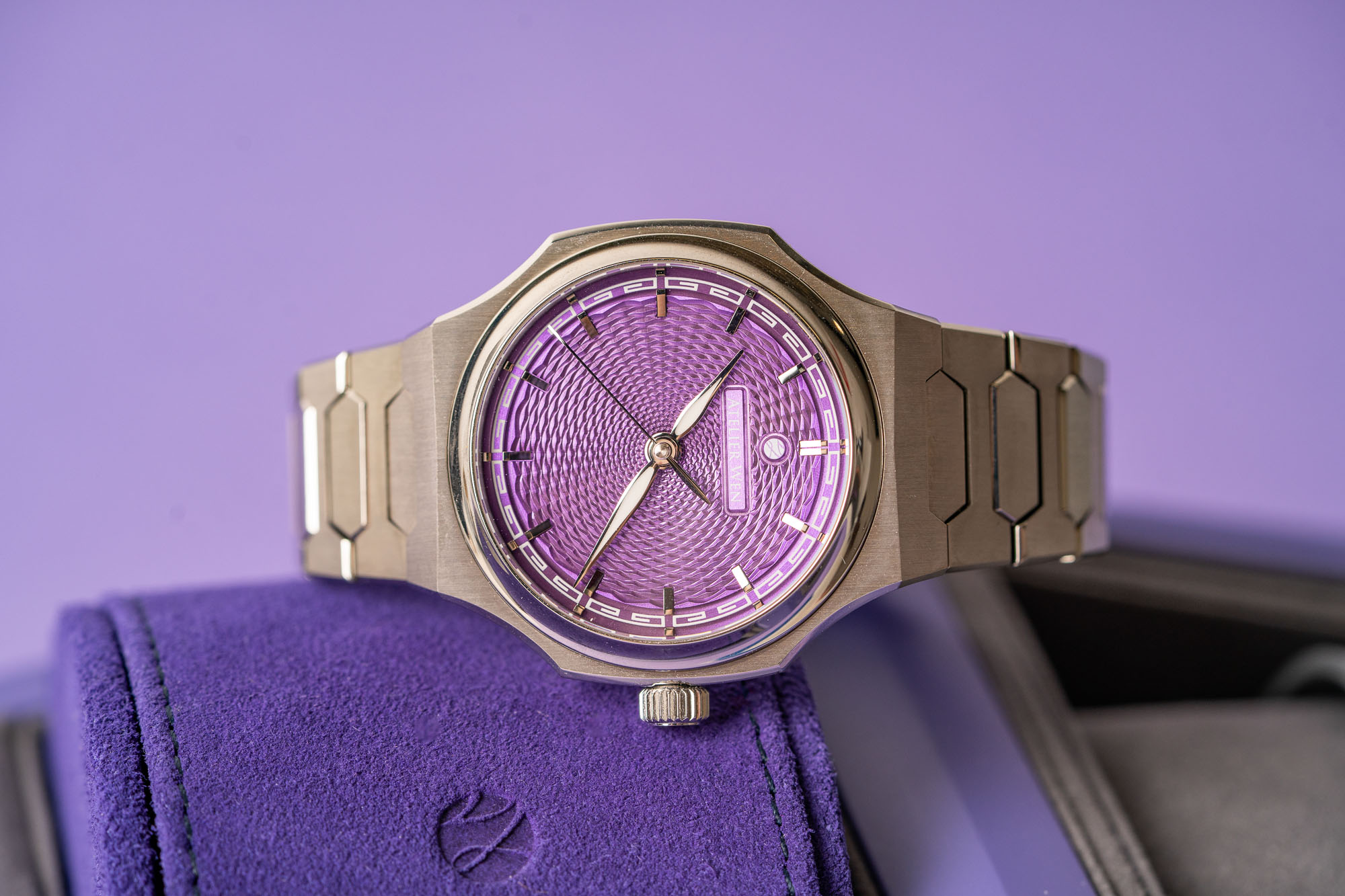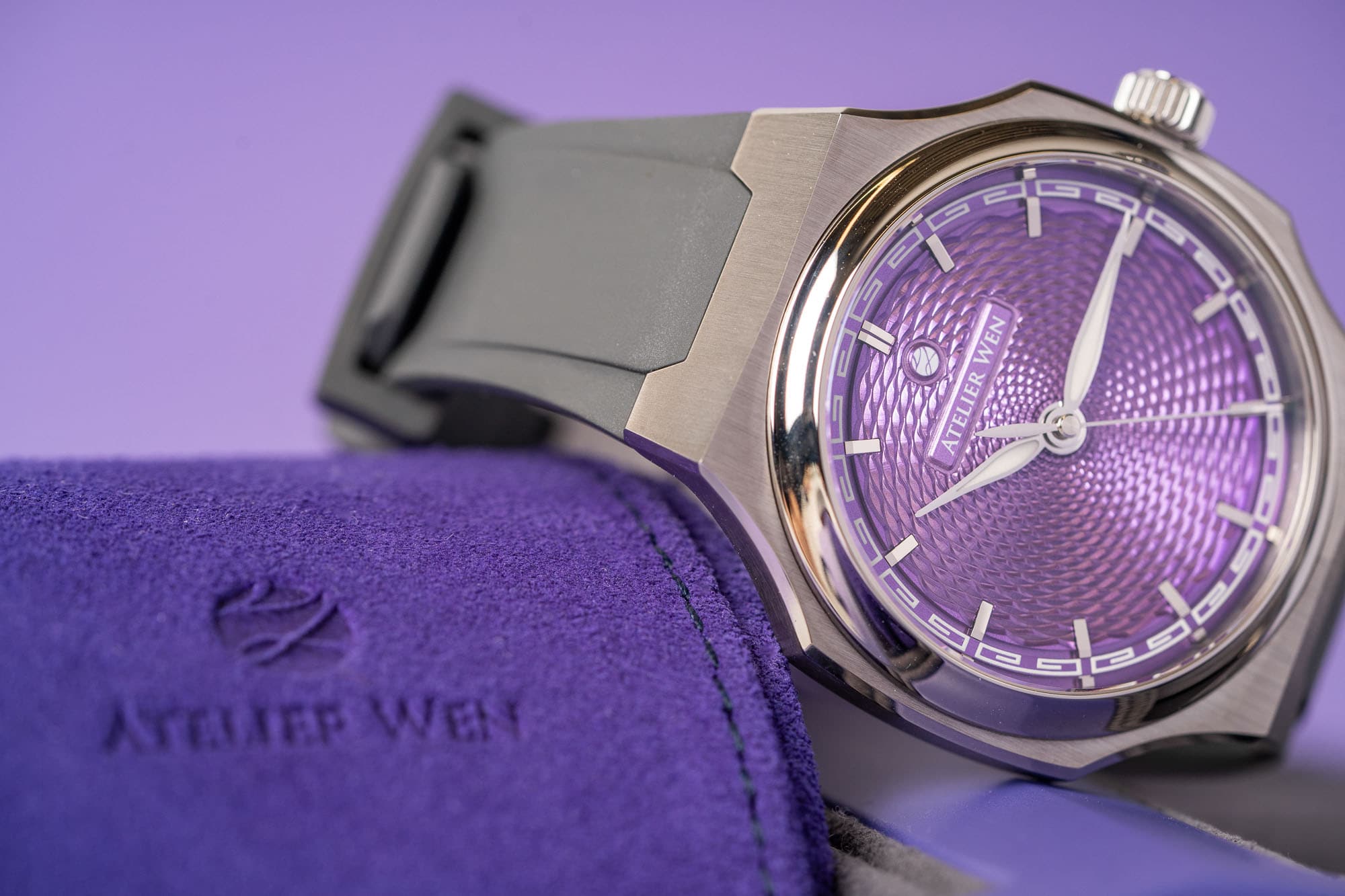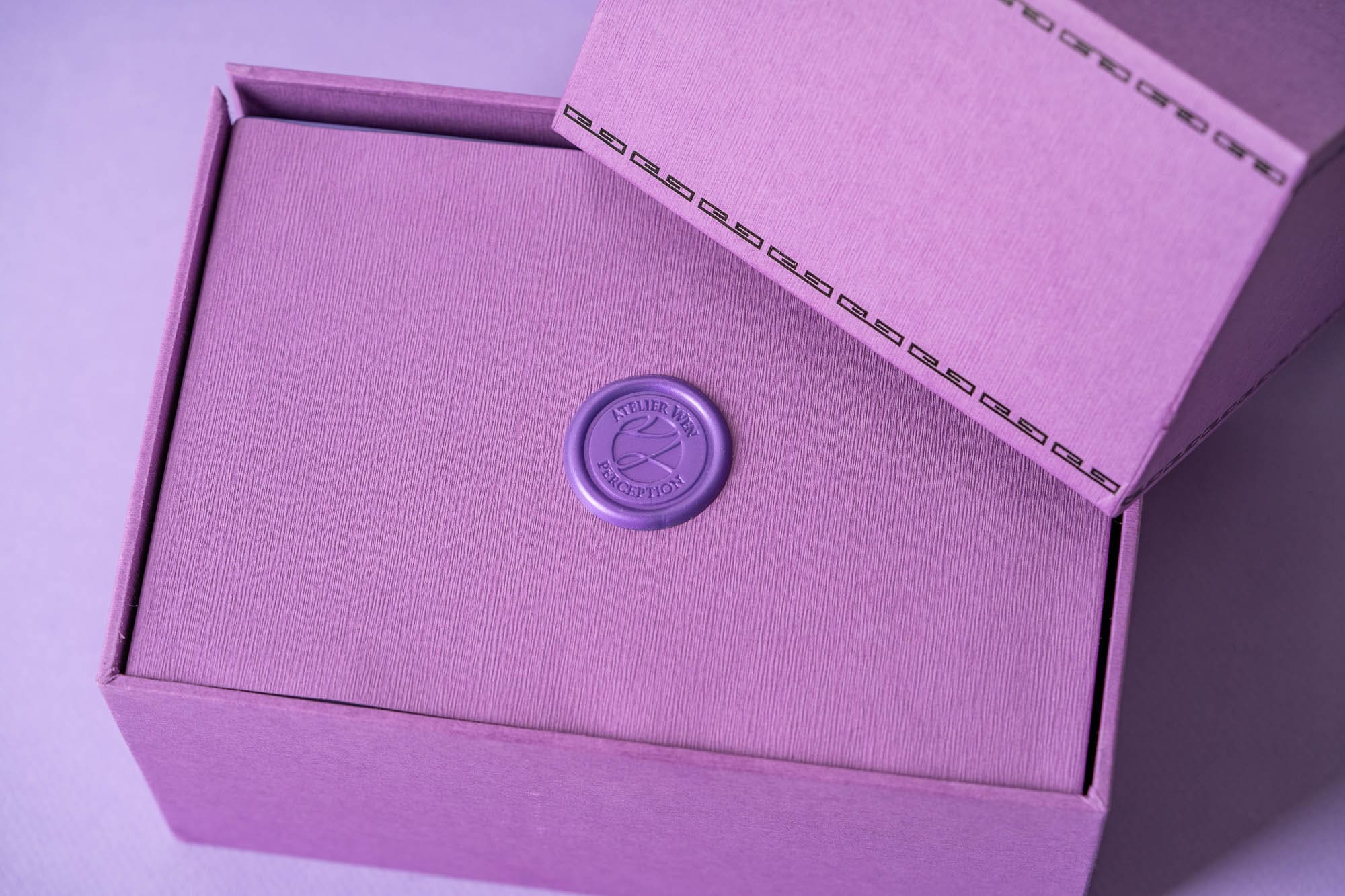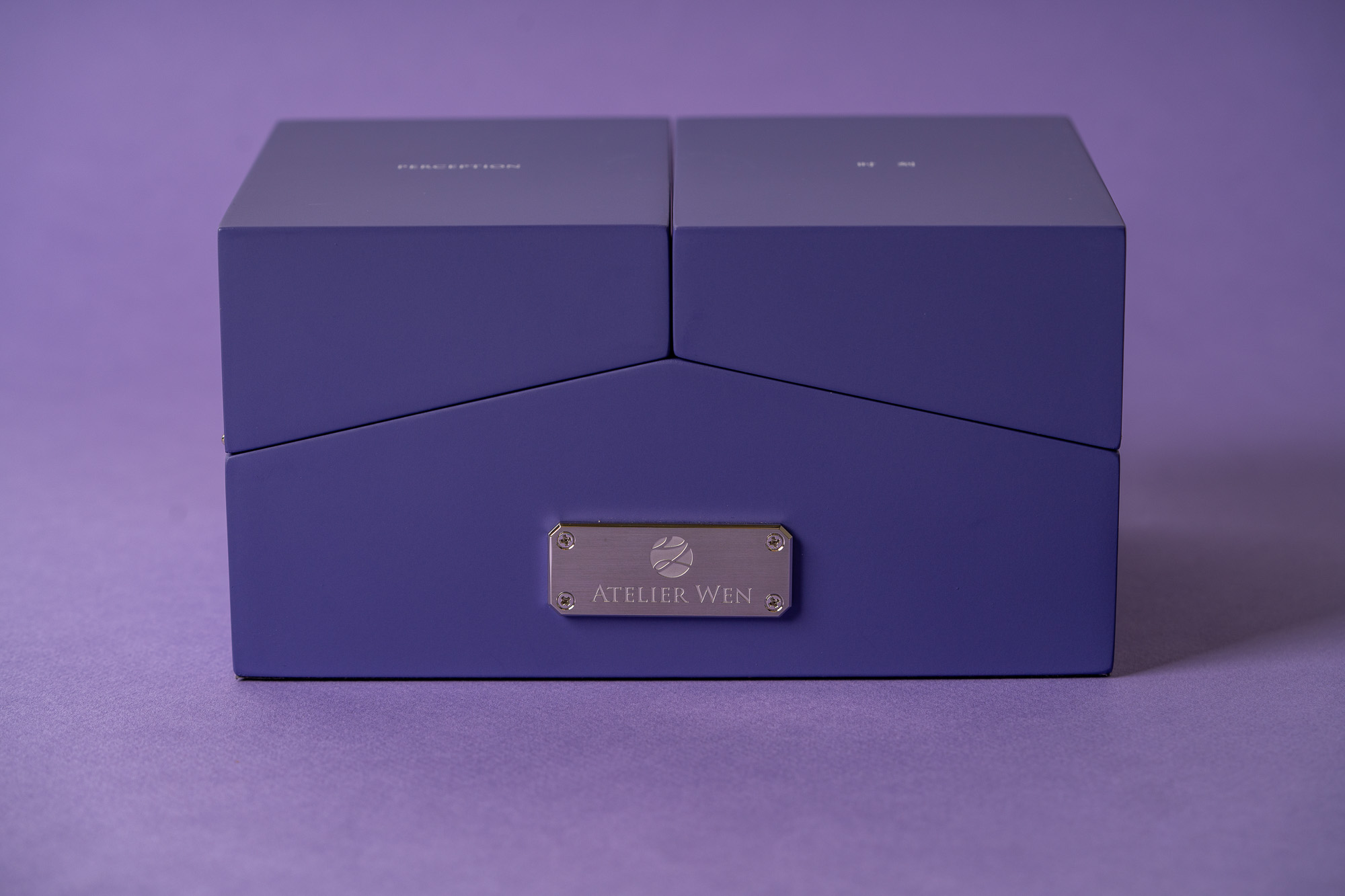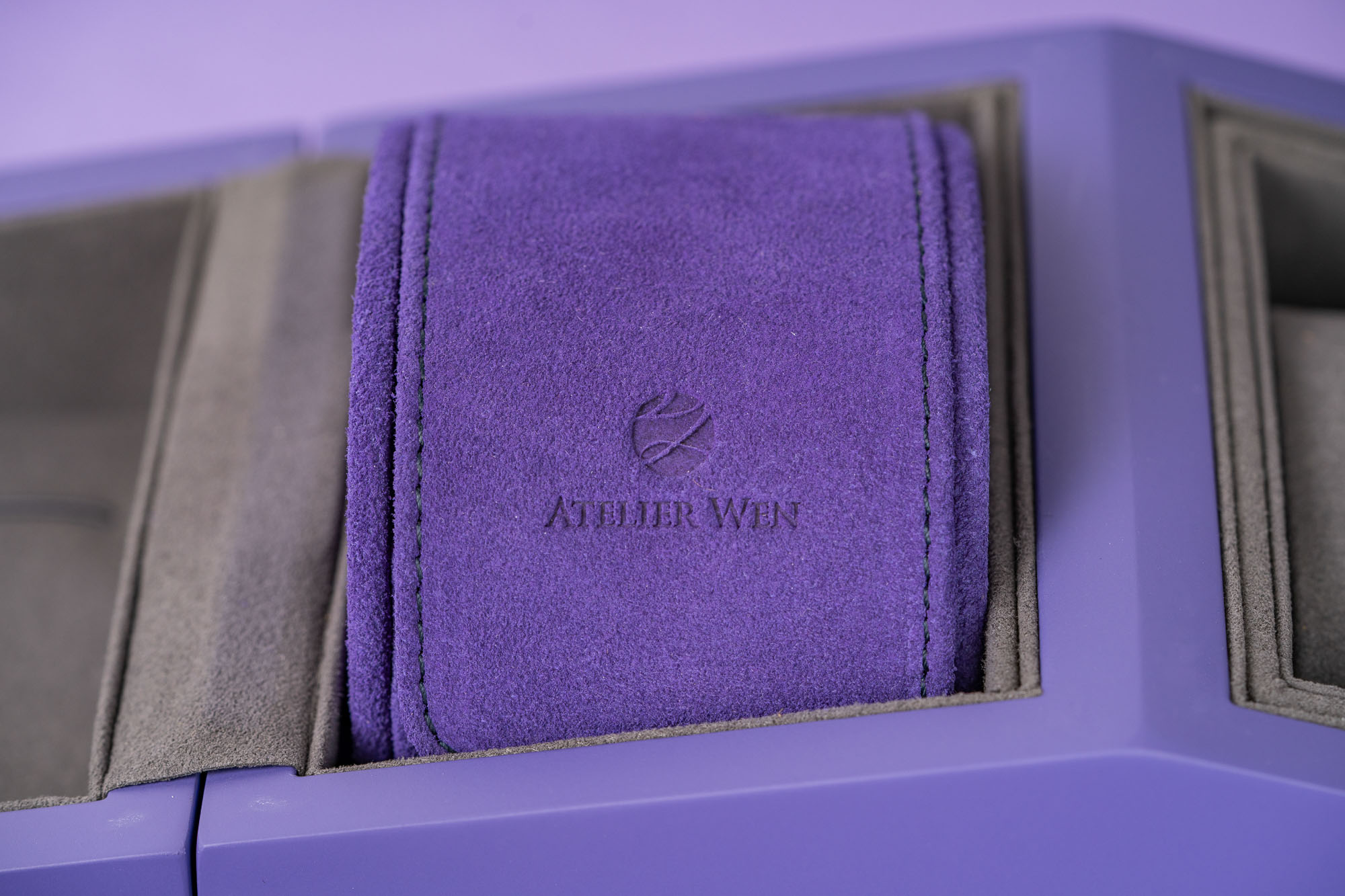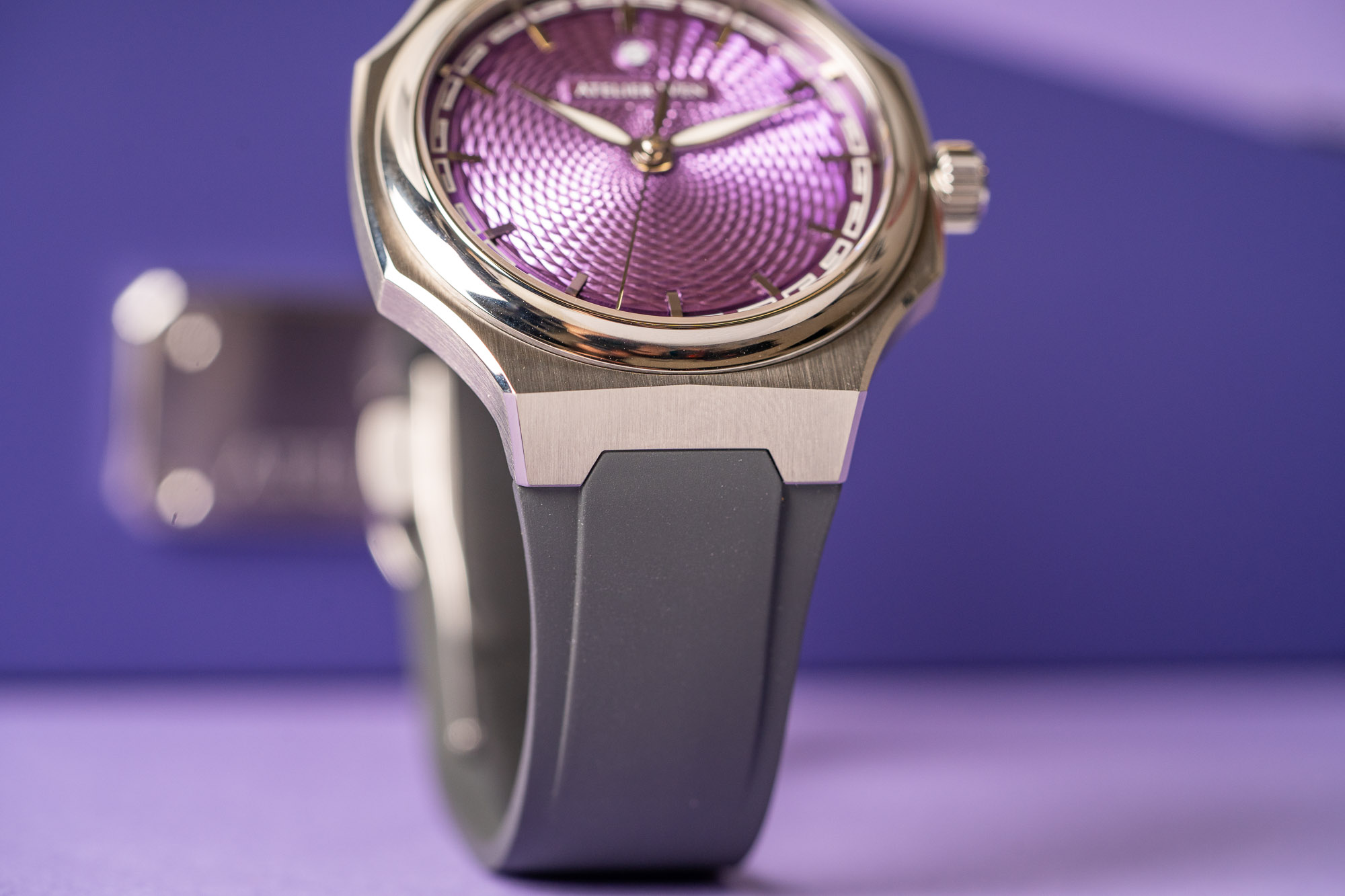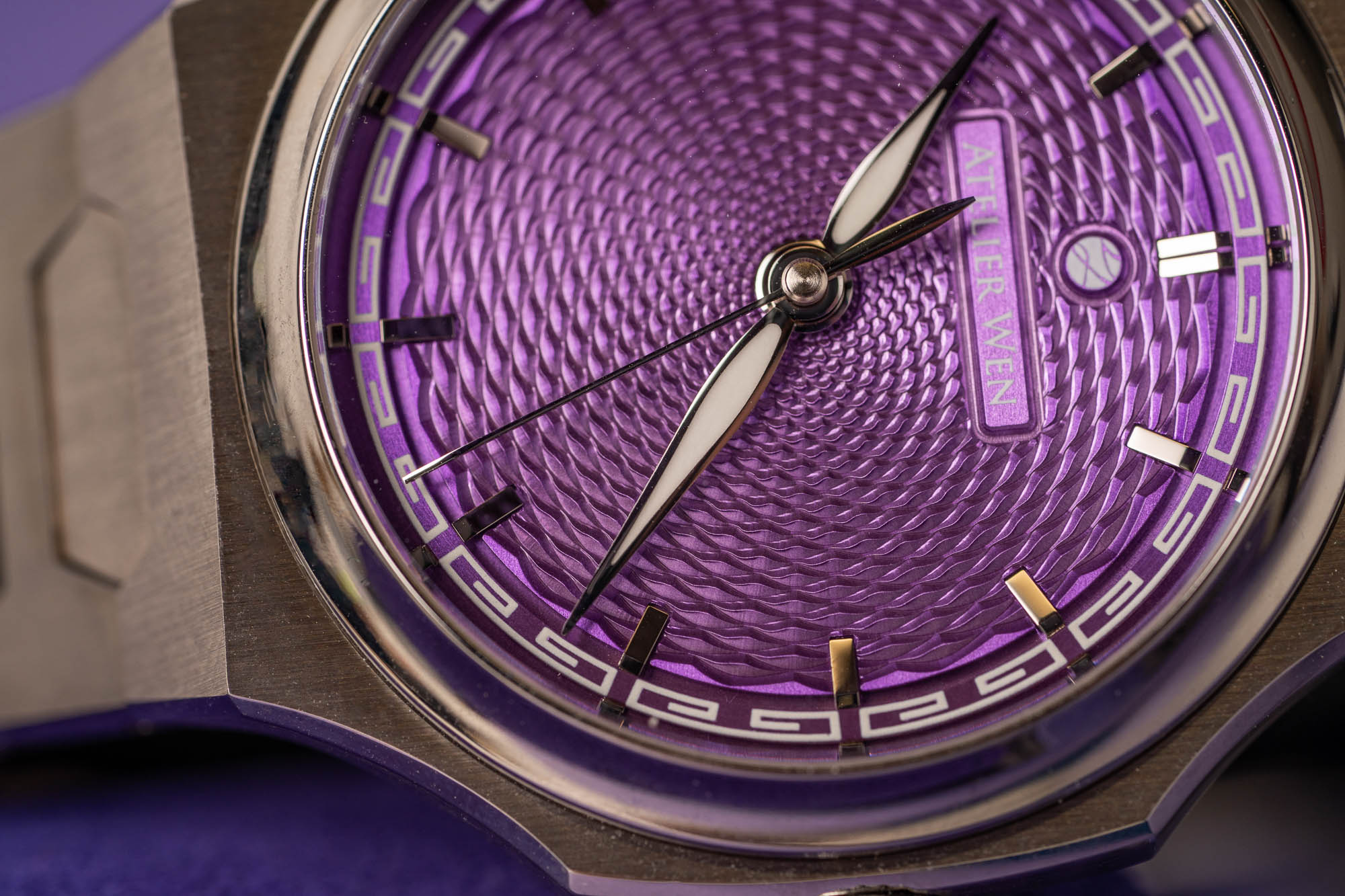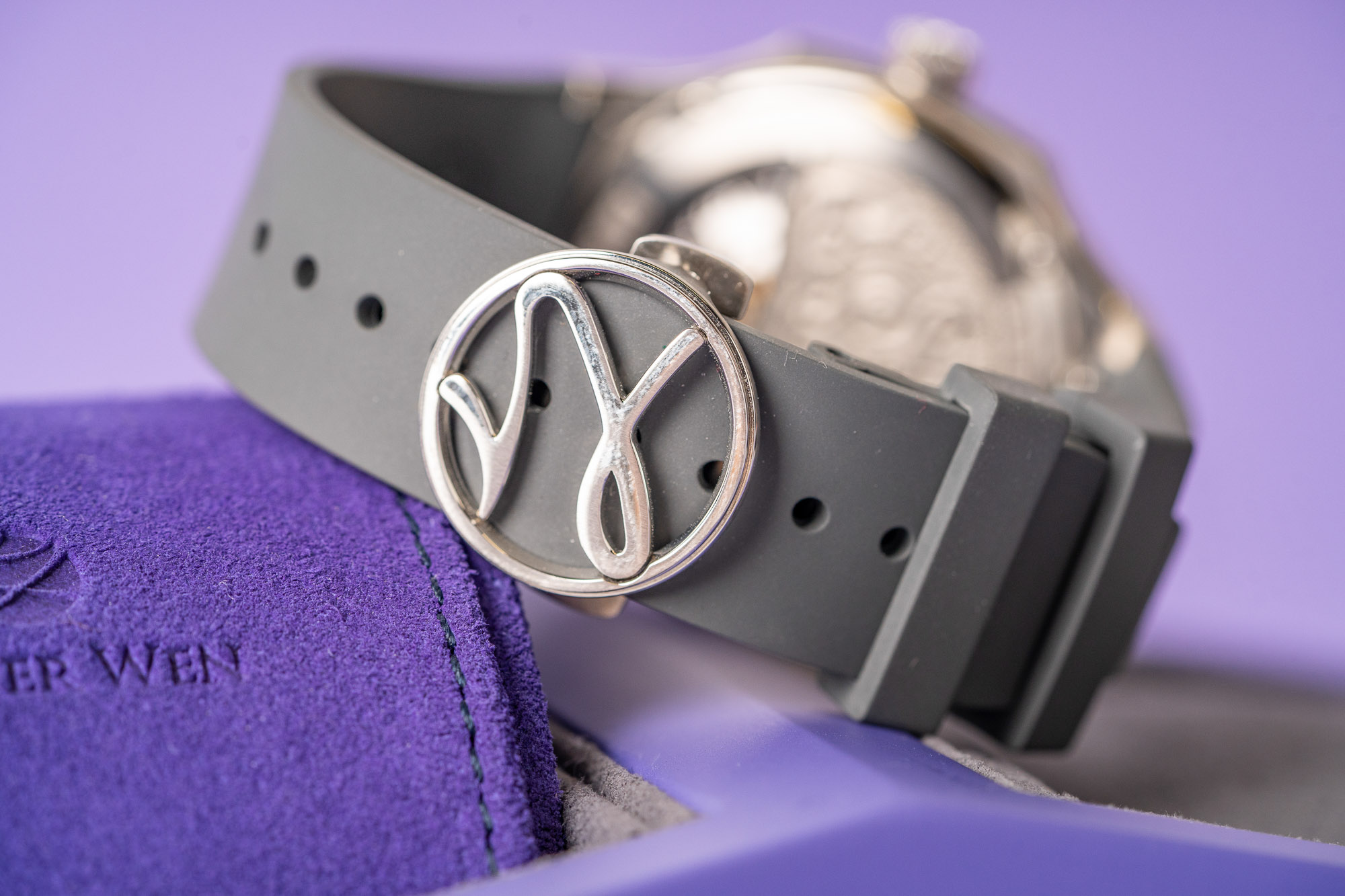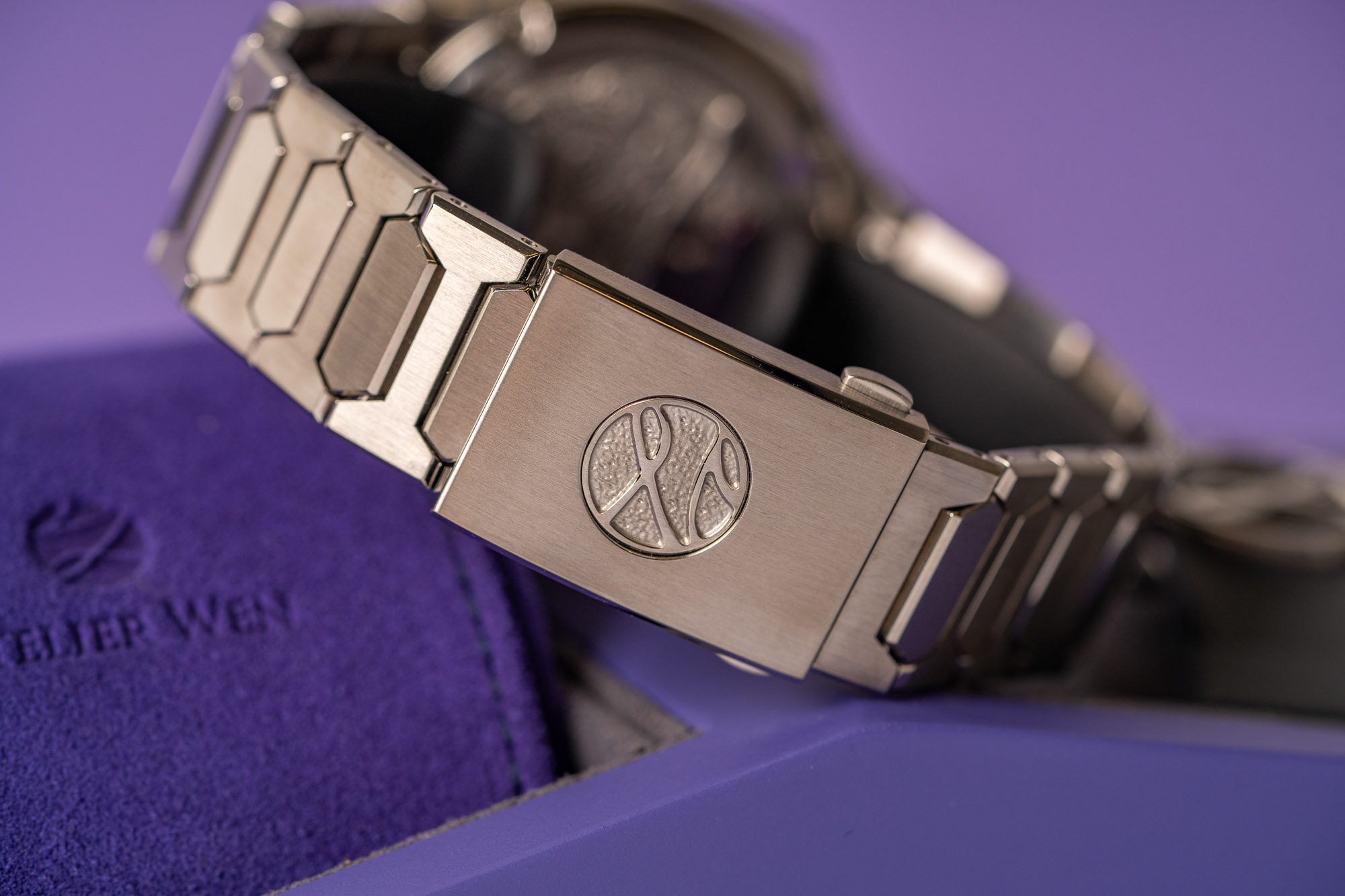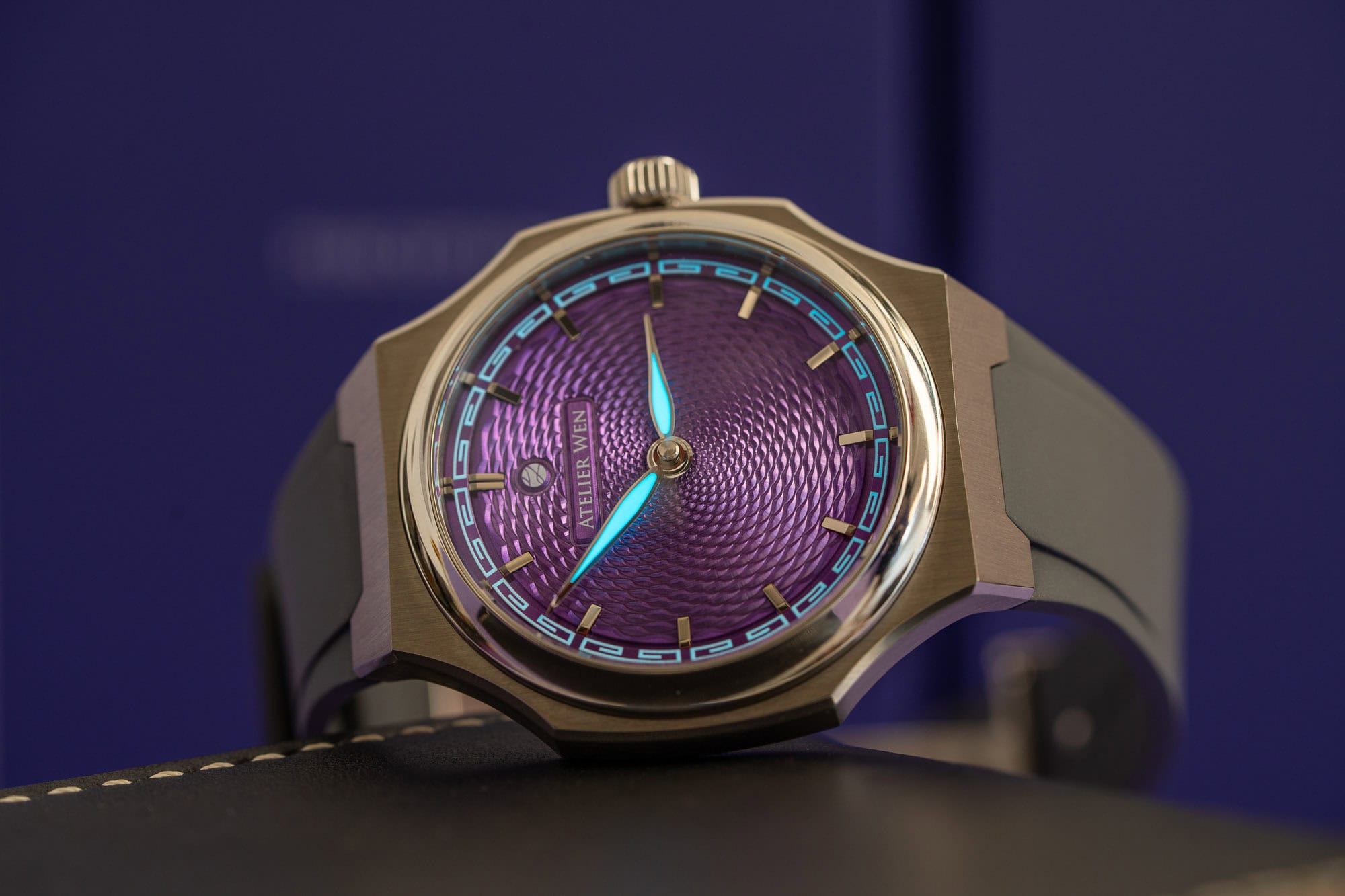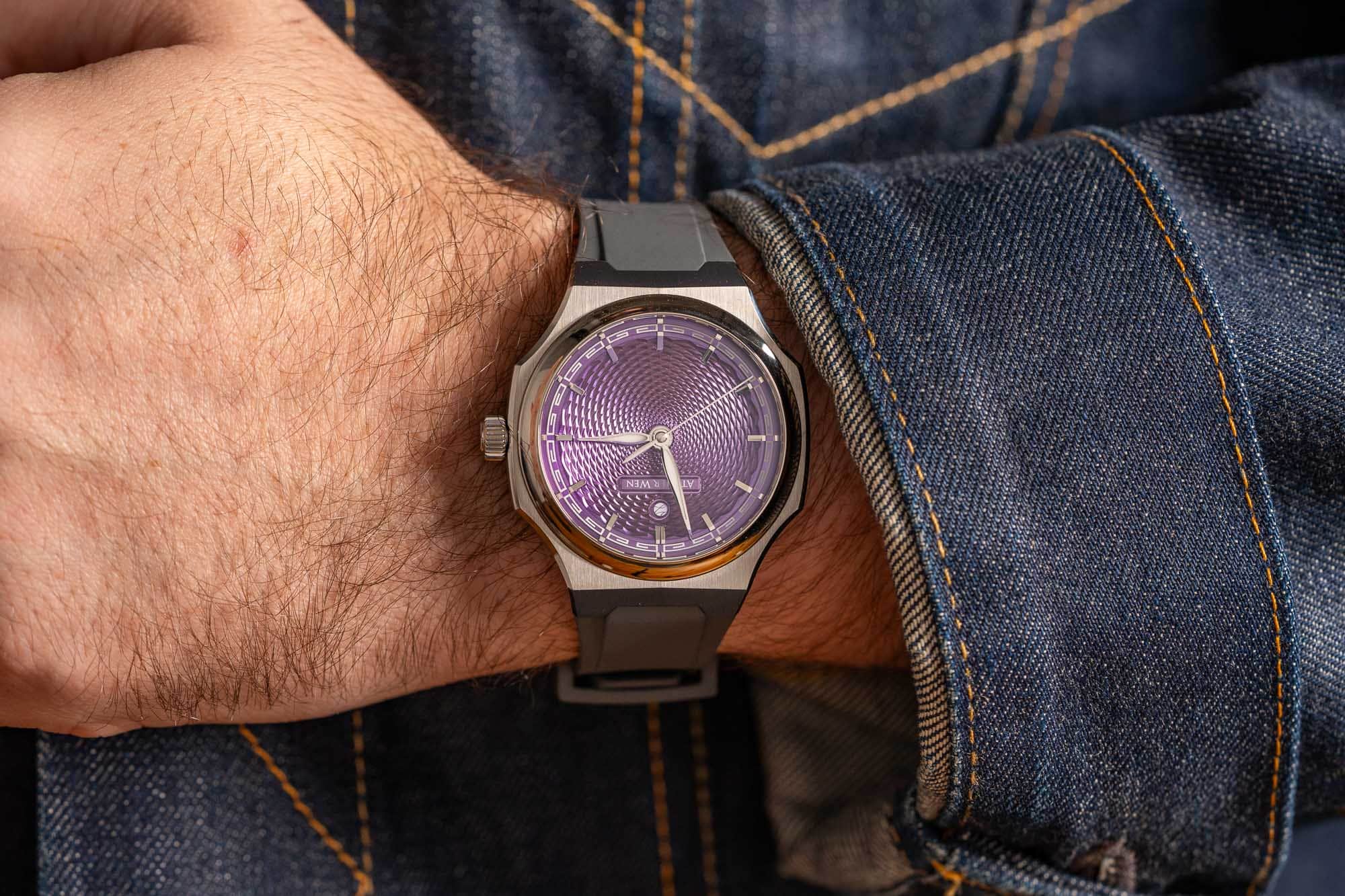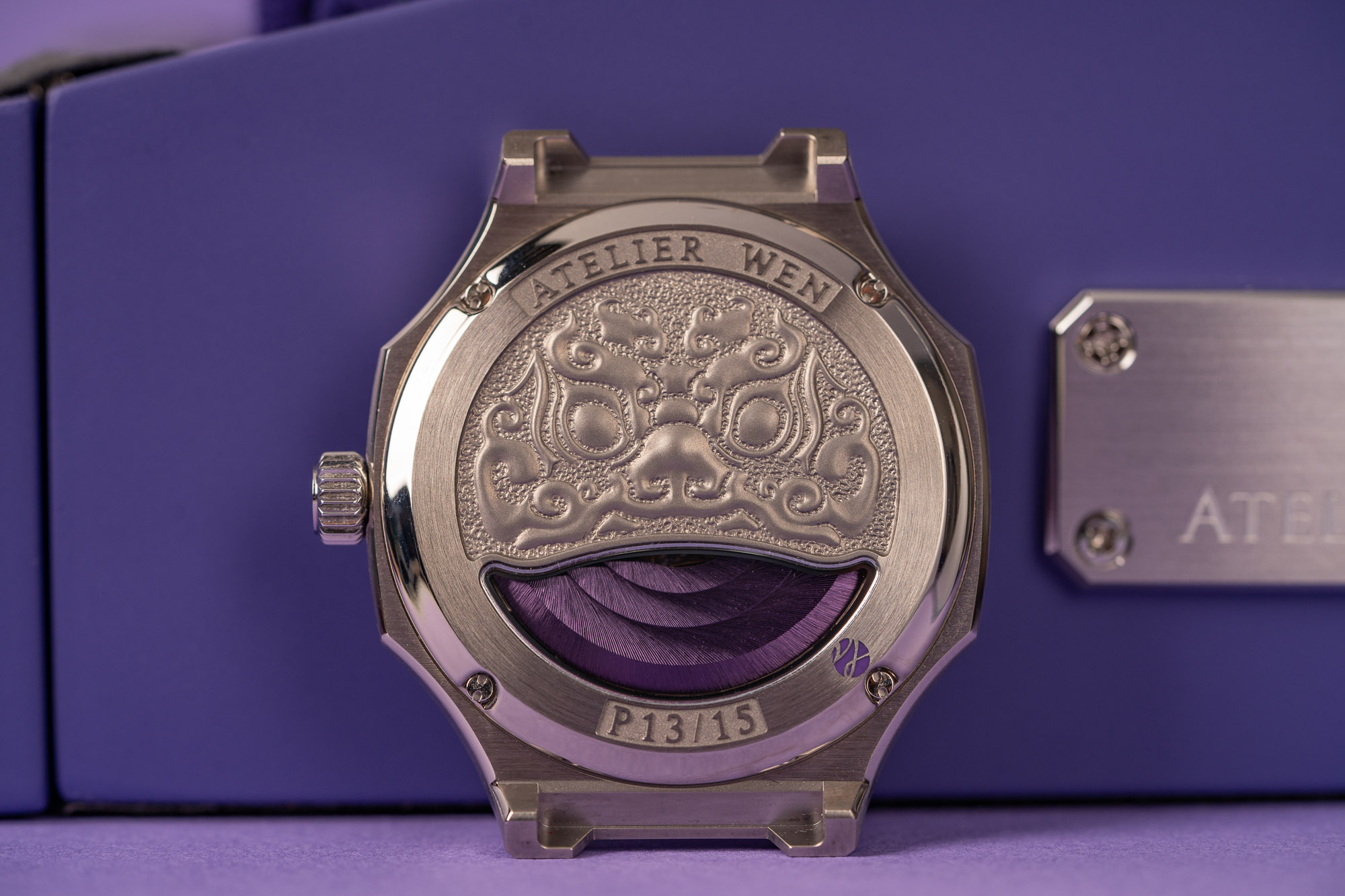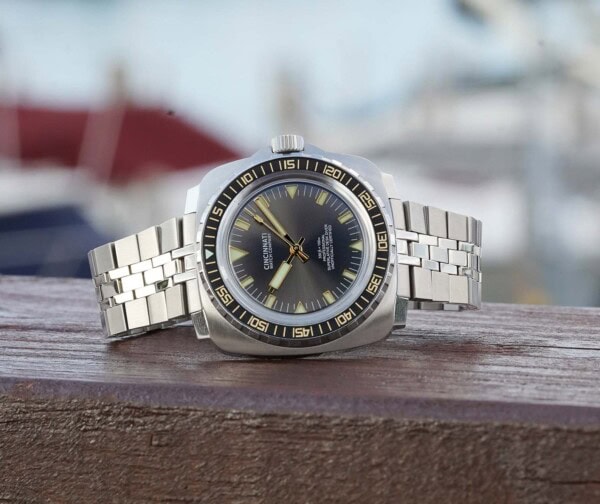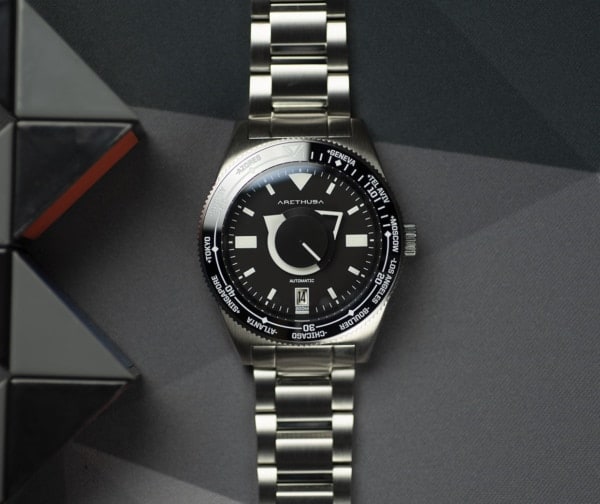While I’m not historically a huge fan of integrated bracelet sports watches, I’ve always liked the aesthetic of the Perception case, and found it to be a very pleasant watch to wear for the week or so that I was able to sample it. It’s 40mm in diameter with a shape that vaguely recalls the Nautilus, with pronounced “wings” on both case flanks. But in practice, the Perception is very much its own thing, and doesn’t feel too much like a derivative of more well known, higher end watches in a similar style. What really makes the case work, in my opinion, is its height. It measures just 9.4mm tall and wears very close to the wrist. When you combine the light weight and a case shape that makes it wear a bit smaller than the dimensions would indicate, it has a nearly invisible quality to it that I enjoyed, particularly on the rubber strap, which I thought was very comfortable, and might have a slight preference for over the bracelet. There’s certainly nothing wrong with the bracelet, but the strap just worked a bit better on my wrist and the lightness is quite appealing.
![]()
The real showstopper here, and the reason we’re talking about this watch at all, however, is the dial. Atelier Wen has really tapped into something with their guilloche dials, which they advertise as being “handcrafted” and “turned by China’s sole guilloche master craftsman, Cheng Yucai.” They also write that the dials are “hand turned on rose engines in the workshop of China’s sole guilloche master craftsman.” That’s, potentially, a distinction that could be of some importance to certain collectors, although it means very little to me, and I’ll try to explain why.
Handcraft is a wonderful thing, and I love owning watches that have been touched by true artisans, but as a watch media professional and someone who has been around this stuff for a whole bunch of years, I think I’m fairly savvy in understanding that, at a certain price point, concessions and shortcuts are always going to be apparent. It doesn’t take a deep understanding of the technical aspects of guilloche work to understand that, for example, the watch dials made by Josh Shapiro might be made in a fundamentally different way than those fabricated by Cheng Yucai. Shapiro’s watches approach and sometimes exceed six figures. The Perception is a little under $4,000. At this price point, I don’t need or expect any single component to be made by a single craftsperson, and would expect that some industrialization of the craft process has occurred, regardless of what a brand is telling me in their marketing. While I always hope that brands are as transparent as possible when they’re trying to sell me a luxury object, I think it’s also important to simply be reasonable in our expectations.
I’d argue that at the Perception’s price point, what matters most is deciding if that guilloche looks good or not. This will largely come down to subjective matters of taste, but I have to say that I was quite impressed with what I saw. Am I an expert evaluator of high end guilloche? Reader, I am not. It’s just not a corner of the watch industry I’ve had much exposure to, and it’s frankly outside my personal taste. But looking at the Perception Mù under a loupe reveals a balance of precision and little signs of handwork (in other words, tiny idiosyncrasies only visible under magnification) that you’d expect in a dial made using traditional guilloche methods. Or, at least methods adjacent to traditional guilloche methods. It’s clear, in other words, that the Mù’s dial is not stamped. Stamped guilloche is easy to spot even for a novice, as it appears largely perfect, somewhat sterile, and clearly lacking in the type of character you’d expect with a dial element made by hand.
![]()
There have been some in the watch community very recently who have claimed that Atelier Wen’s guilloche methods are not what they advertise. A widely shared article published in the King Flum newsletter by a writer who goes by the name of A Watch Critic goes into great depth about what he terms “the guilloche deception.” The claim, specifically, seems to rest largely on the idea that Atelier Wen markets these dials as being hand-turned by Cheng Yucai himself, when evidence seems to indicate that his apprentices and staff might be doing the work under his supervision. Further, the author claims that Atelier Wen and Cheng are obfuscating important technical aspects of how the guilloche patterns are achieved, and whether the hand operated machines used by Cheng and/or his team are in fact rose engines at all. The assertion is basically that Cheng’s methods are needlessly time intensive while being less reliant on the skill of a craftsperson, and that the guilloche process has been reduced to a series of steps almost anyone can follow to achieve a result like the dials you see on the Perception. In short, his complaint seems to be that Atelier Wen has industrialized the process of applying guilloche, while making claims that these watches are artisanal, craft objects.
I reached out to Robin at Atelier Wen to see if he was interested in responding. When we chatted briefly last week, he expressed a desire to put the whole episode behind him, and didn’t seem interested engaging in a never-ending back and forth with his critics. “On my end, I thought I had given a definitive answer,” Robin told me when we spoke on a video call. “We provided proof,” he said, “of the time it takes to make the dials,” and explained that he sent a team to check on Cheng’s processes and was satisfied with what they found. “From that moment on, the issue is closed,” he said.
When Robin mentions that “definitive answer,” he’s referring in part to an Instagram post dated August 14, in which brand’s founders explain that Cheng’s methods, which incorporate rose and straight line engines, are not directly comparable to more traditional guilloche processes born out of a European tradition. Cheng, of course, is from China, a country that has many significant craft traditions, but does not share much in the way of watchmaking heritage with Switzerland. Cheng is self taught, and has stated that he has built his machines largely from scratch – it stands to reason that the time it takes to engrave a dial or the methodology behind it might differ dramatically from what an experienced guilloche artisan based in Switzerland or Germany who learned the craft through the traditions of watchmaking in those countries might expect.
![]()
I reached out to A Watch Critic as well, via Instagram, to see if he had any additional commentary to add, specifically with respect to Atelier Wen’s explanation provided via social media and referenced above, which was published weeks ahead of the newsletter post, after speculation first began to swirl about Cheng’s methods. A Watch Critic provided a lengthy text response that underlined many of the points he made in his previously published article, including a rebuttal of the “36 hour” claim made by Atelier Wen, buttressed by a video included in their social media post. “The video shows the speed of scribing,” he wrote, “and even if [Cheng] goes over each line multiple times and needs time to adjust for each line, you would have to be extremely slow/inefficient if you want to get close to the 36 hour claim, and for example go over each line 10-15 times or so, which makes no sense.” A Watch Critic also cites “experts” he has spoken with (but does not name) who corroborate the view that “the claims they make are just nonsense to anyone with experience with engine turning.”
This kind of sniping directed at a brand that is clearly on the rise is, unfortunately, not particularly surprising. While it’s important to ask questions about how a brand does whatever it is they say they do, much of the conversation around Atelier Wen’s guilloche dials has been couched in the language of gatekeeping, something anyone who works in or near any luxury industry will be all too familiar with. Using scare quotes around “Master Cheng,” pointing out that Atelier Wen’s founders come from the world of investment banking and private equity, and, perhaps most egregiously in my opinion, making claims about the brand’s methods anonymously, under a pseudonym, do not inspire confidence that any critique presented is grounded in good faith. When I asked A Watch Critic if he had made any attempt to reach out to Atelier Wen while researching his story, he replied that he “didn’t feel the need to reach out to Atelier Wen as they have shared sufficient information publicly to draw the conclusions I did.” Assuming he’s speaking of the brand’s Instagram post from August, one could surmise he simply is not taking them at their word. He added, “I don’t have any obligation to inform or get any approval from them.” True enough.
![]()
Instead of pointing fingers and finding fault with Atelier Wen and Cheng for producing guilloche dials the way that they do, it strikes me, and probably many others in the community of small, upstart micro brands, as something worth celebrating. The culture of this community is one of experimentation and finding new ways to do things. If your perspective is strictly rooted in traditionalism, it’s easy to have a Puritanical view on applying guilloche in any way other than with a rose engine with a very particular method that should take a specific period of time. Ingenuity and problem solving is part of what makes the independent watch space (particularly at an affordable price point) so rewarding. No, the guilloche dials made by Cheng for Atelier Wen are not directly comparable to those made by Shapiro or Comblemine, or other high end masters of the craft. They represent something new, and different, based on the fundamental principles of using the resources available to you.
![]()
Finding new ways to do old things is not a value held closely by the traditional watch community. In fact, the opposite is true: brands and watchmakers are celebrated for doing things in the old-fashioned way, even when it’s more expensive or time consuming. I’m interested in and celebrate traditional craftsmanship, but I think it’s important to also hold space for those who are ready to challenge the status quo and innovate in a meaningful way. To me, that’s what it feels like Atelier Wen is doing with these dials, and while it’s a shame that some have chosen to portray them as pretenders or frauds, it’s a tale as old as time, or at least as old as the printing press.
If you look past the noise, what we’re left with in the Perception Mù is a very well executed integrated bracelet sports watch that I think will please a lot of people eager to experience a particular type of craftsmanship that has not always been easily attainable. At $3,588, this feels like a lot of watch for the money, even if you do subscribe to what I think are the erroneous notions that the guilloche work is filled with shortcuts or somehow inauthentic. The level of finishing on the titanium, for example, is quite good, surpassing, in my opinion, the standards of the more expensive Longines Zulu Time that I reviewed recently.
![]()
If there’s an area where the watch generates some real question marks, it’s likely in the choice of movement. Made by the Liaoning Peacock Watch Company, the caliber SL1588A will simply be unfamiliar to many jumping into Atelier Wen ownership for the first time. From the beginning, Atelier Wen has chosen to source as many components as possible from China, including the caliber, and they exist as one of very few enthusiast focused brands to do so with a great deal of pride. There’s no reason at all to suspect that the SL1588A will not perform well over time (Atelier Wen regulates the movements to five positions, and the movements go through a variety of tests, including shock and temperature testing), but it’s worth acknowledging that this caliber will be unfamiliar to many. In my brief test period, the watch kept time and the movement operated exactly as I’d expect it to.
![]()
Atelier Wen is a brand I’m rooting for, and I’m curious to see what might be next for them. They hint throughout their website and IG feed that new case designs (and possible new artisanal techniques) are in the works, which is an exciting prospect. It would probably be easy for Atelier Wen to simply milk the Perception indefinitely, so it’s to their credit if they do indeed elect to turn the page and move onto something completely new. If you look at their first watch, the Porcelain Odyssey, I think it’s fair to say that it never could have predicted the look and feel of the Perception, so the idea of a new design that’s equally as unpredictable is enticing. Atelier Wen






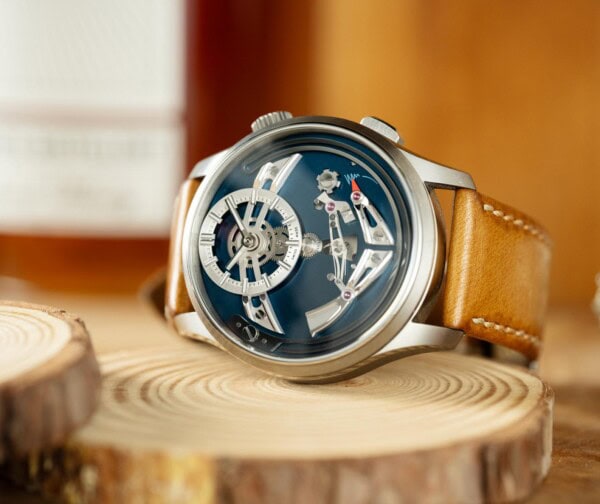


 Featured Videos
Featured Videos




